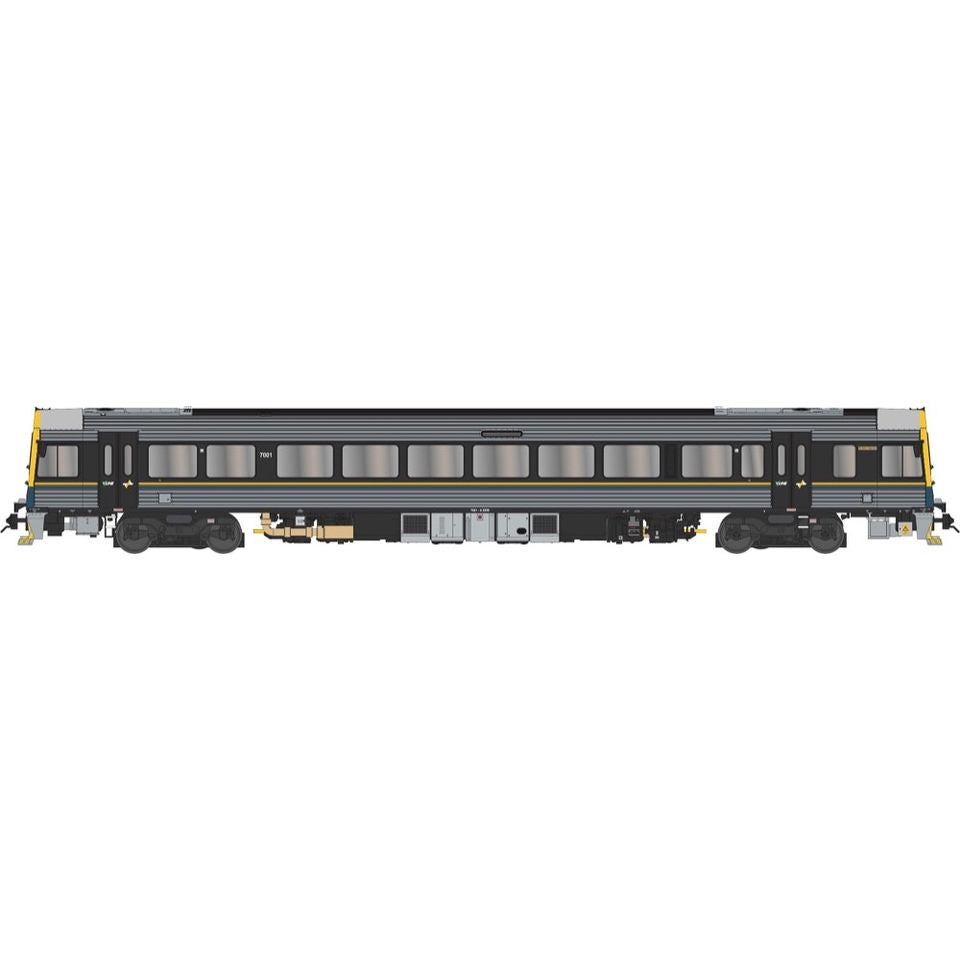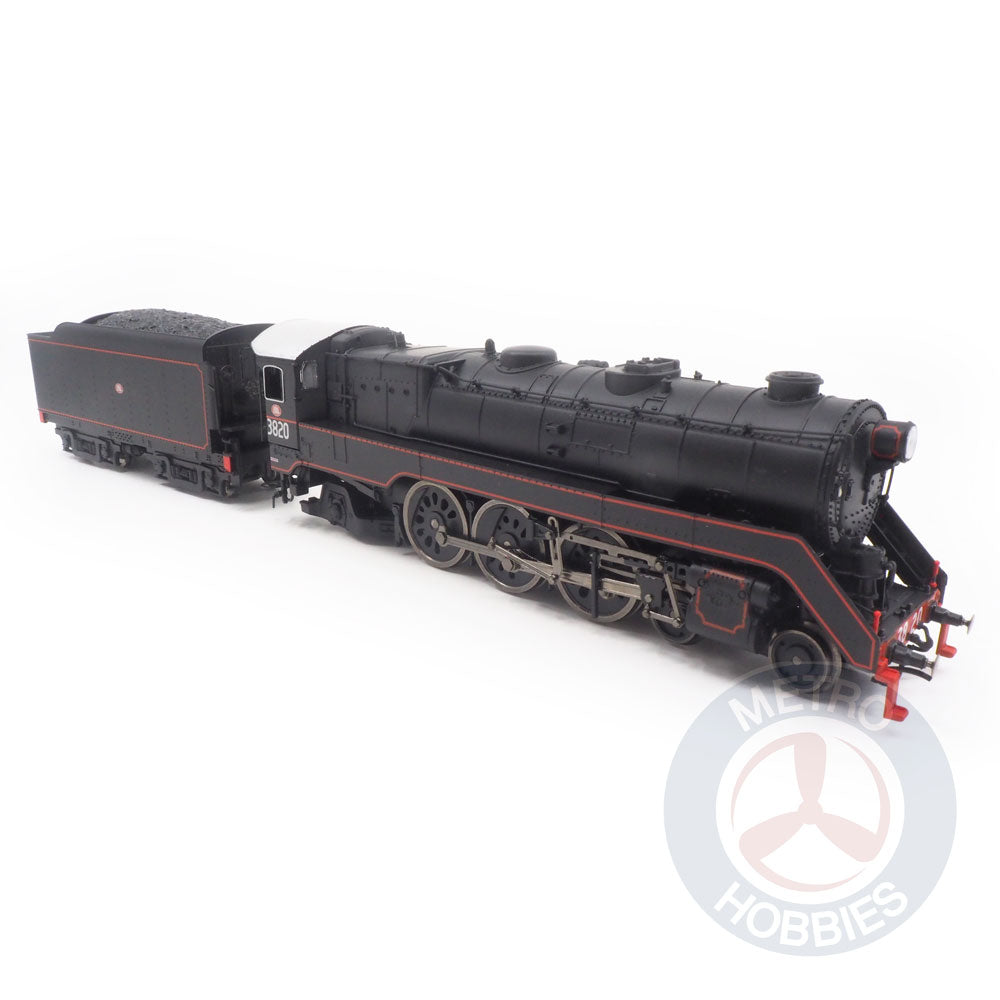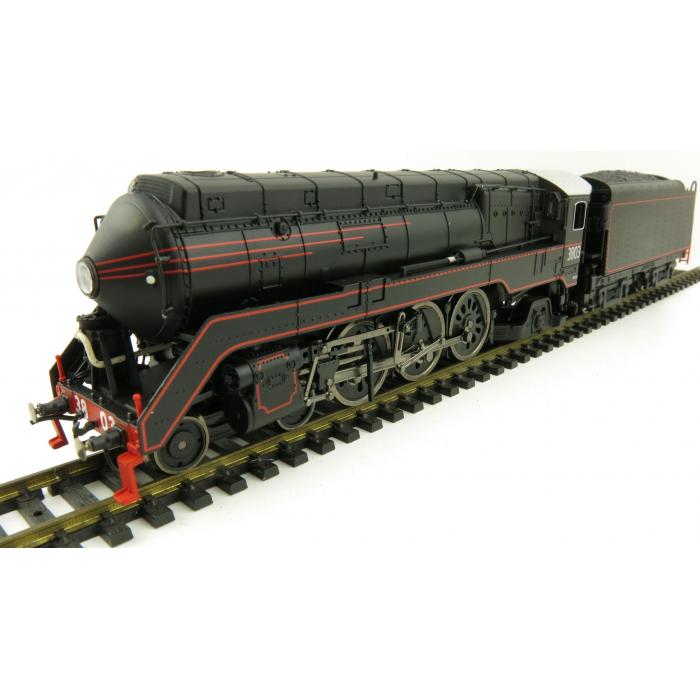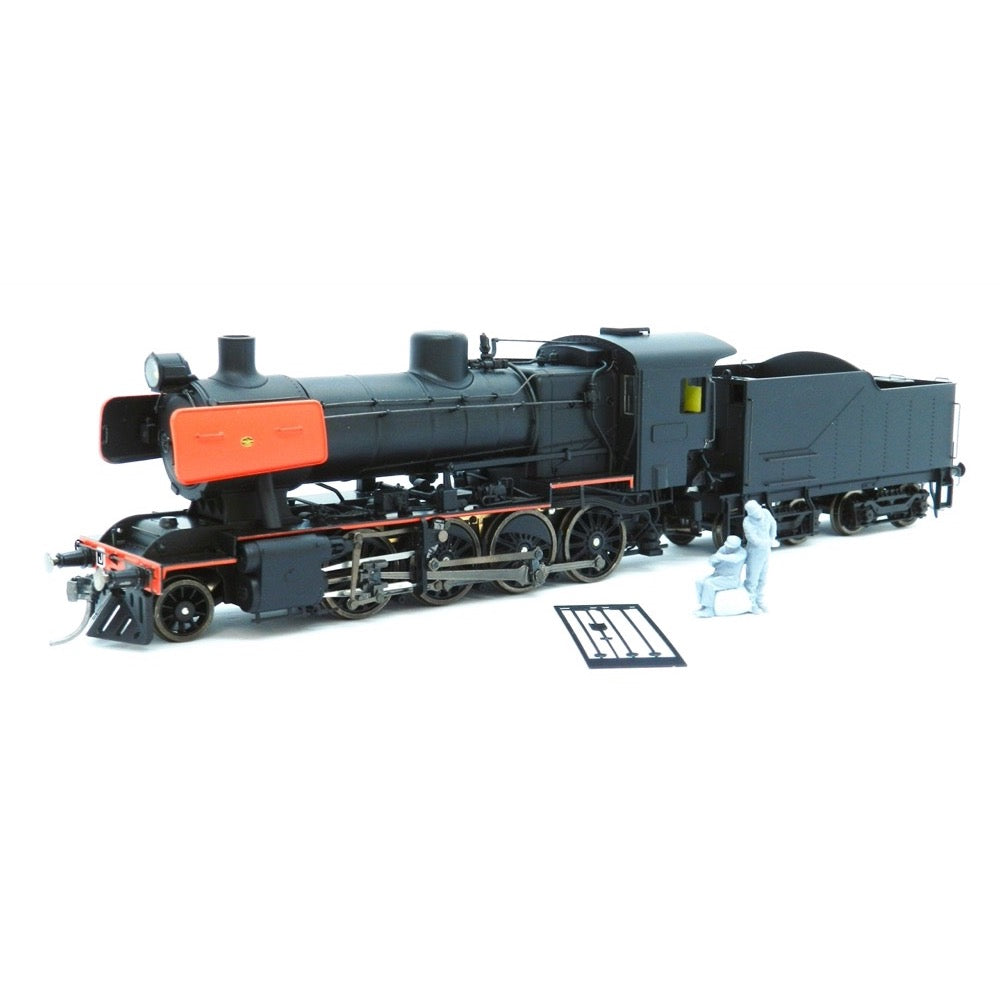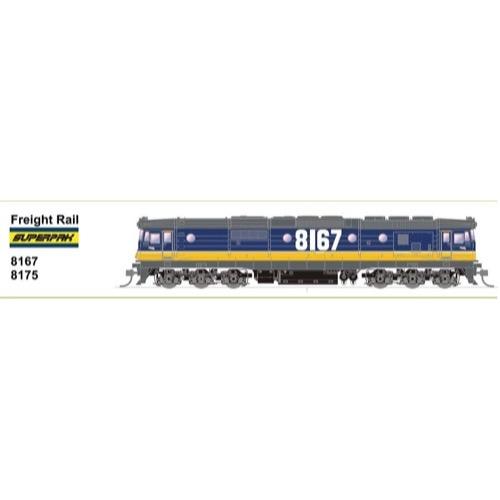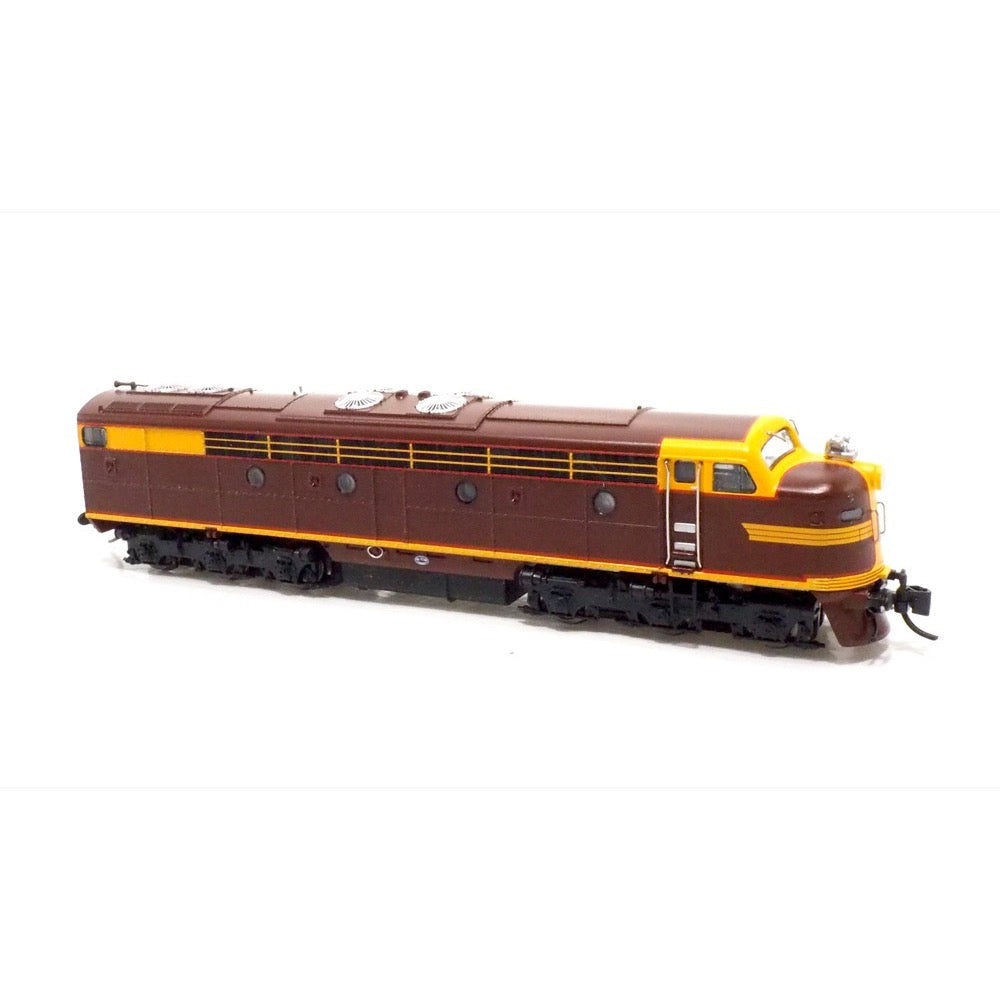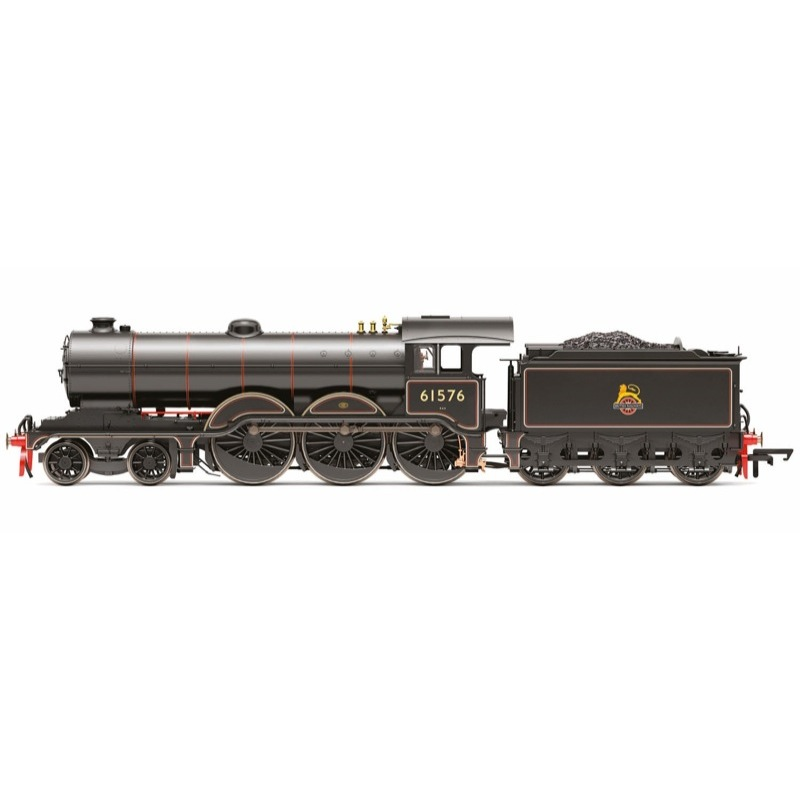
Hornby R3546 OO BR Holden B12 Early BR
The restrictions on locomotive weight and length were keenly felt by the Great Eastern Railway and whilst James Holden's S46, D56 and H88 Claud Hamilton 4-4-0 designs were not unduly restricted, when he came to consider a 4-6-0 design for high performance express work, the inside cylinder was his only real option. To gain power, Holden was quick to embrace the idea of superheating and so in 1911, the first order was placed for his S69 class locomotive.
Under the GER, seventy one S69 engines were built, fifty one at Stratford and twenty at Wm Beardmore & Co. in Glasgow. The large enclosed cab with side windows and an extended roof were a noticeable feature of Holden's design which, allied to the large Belpaire firebox, decorative valance over the driving wheels and short 3,700 gallon tender, gave the impression of the locomotive being bigger than it actually was. Allocated throughout East Anglian sheds, the S69 saw sterling service hauling the Liverpool Street-Norwich mainline trains, as well as the Harwich Boat Trains, Cambridge and Great Yarmouth services.
At Grouping in 1923, the S69 became classified as the LNER B12 and extended its range to Doncaster, Leeds and Manchester. The LNER plans for 2-6-4T engines to operate services to Southend were abandoned following issues with the type's stability and so a further ten B12 locomotives were ordered from Beyer, Peacock and Co to fill the void, the design being fitted with vacuum ejectors, Lenz poppet valves and dual air and vacuum brakes and classified as class B12/2.With large scale upgrading to the permanent way by the LNER, it at last became possible to increase the weight of locomotives and so a larger, round topped boiler pattern, with a bigger super heater was introduced, along with modified valve gear, resulting in a new B12/3 classification. Further modifications were carried out to the boilers of nine of the twenty five Scottish engines, resulting in the final variation of the class, the B12/4.
During 1944, due to their wide route availability, a number of the B12/3s were utilized to work on ambulance trains hauling air braked, American built stock, mainly in the West Country. To improve the loading gauge, the footsteps were cut back and holes cut into them, making them instantly recognizable in later years. Seventy two locomotives entered British Rail service at Nationalization in 1948, further withdrawals taking place at regular intervals until the last locomotive, No.61572, was withdrawn in September 1961 and it is this engine that is preserved at the North Norfolk Railway. Locomotive 61576 was built at Beyer Peacock as a B12/2 and entered traffic at Gorton on August 31, 1928, remaining there until September 20, 1928 when it was transferred to Stratford.
Spells at Colchester and Ipswich followed, the rebuild to B12/3 taking place in August 1932. During April 1944, whilst allocated to Colchester, the locomotive was adapted to work with the ambulance trains and it continued in service until January 1959, when it was withdrawn from Cambridge Shed.
Maximum curve Hornby 2nd radius + / 438mm+.
Specifications
- Coupling: NEM + Tension Lock
- DCC status: DCC Ready 8 pin socket
- Finish: Painted
- Gauge: OO
- Livery: Lined Black with Early Emblem
- Minimum radius curve: 2nd Radius (438mm)
- Motor: 5 pole skew wound
- Colour: Black
- Couplings NEM
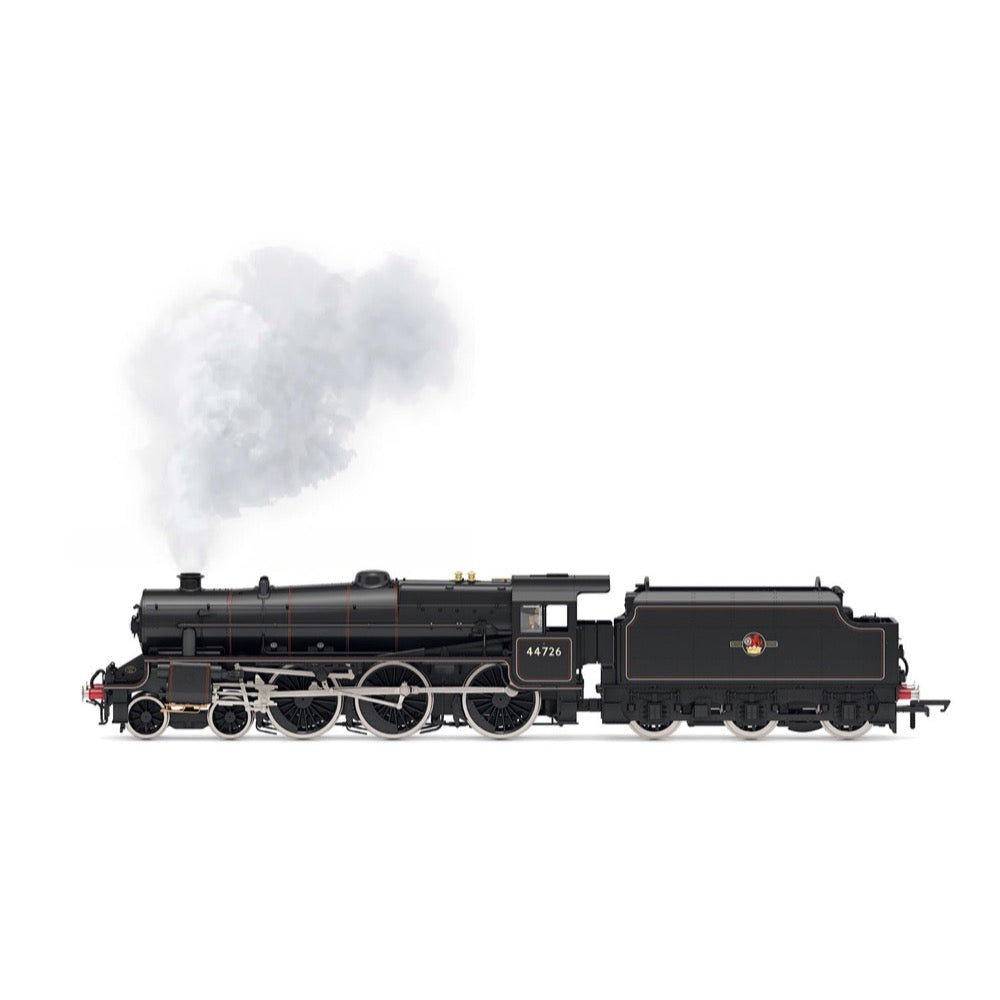
Hornby R30225SS OO BR Stanier 5MT Black 5 4-6-0 44726 with Steam Generator
The ‘Black 5’, one of Stanier’s finest and certainly one of Hornby’s. Using the very latest state of the art design and manufacturing techniques, this totally new Hornby model not only includes a flickering firebox and lit lamp codes but also sound. Alongside the included steam generator, this Black 5 is also brand new tooling, making it a must-have for any collector or those looking to take a step into model railway steam.
Features
- A remarkable flickering firebox and lit lamp codes, the BR, Stanier 5MT 'Black 5', 4-6-0, 44726 is second to none.
- Alongside the steam, experience the joys of sound as this model includes a DCC sound decoder adding even more realism to your layout.
- This Black 5 is also brand new tooling, making it a must-have for any collector or those looking to take a step into model railway steam.
Specification
- Item Length - Without Packaging (cm): 29.3
- Item Height - Without Packaging (cm): 5
- Item Width - Without Packaging (cm): 3.5
- Item Weight - Without Packaging: 0.5
- Item Scale: 1:76 Scale 00 Gauge
- Finish: Painted
- Colour: Black
- DCC Status: TXS Sound Decoders
- 4-6-0 Wheel Configuration
- Operator: BR
- Designer: Sir William Stanier
- Livery: BR Black
- Minimum Curve (mm): Radius 2
- Number of Parts: 1
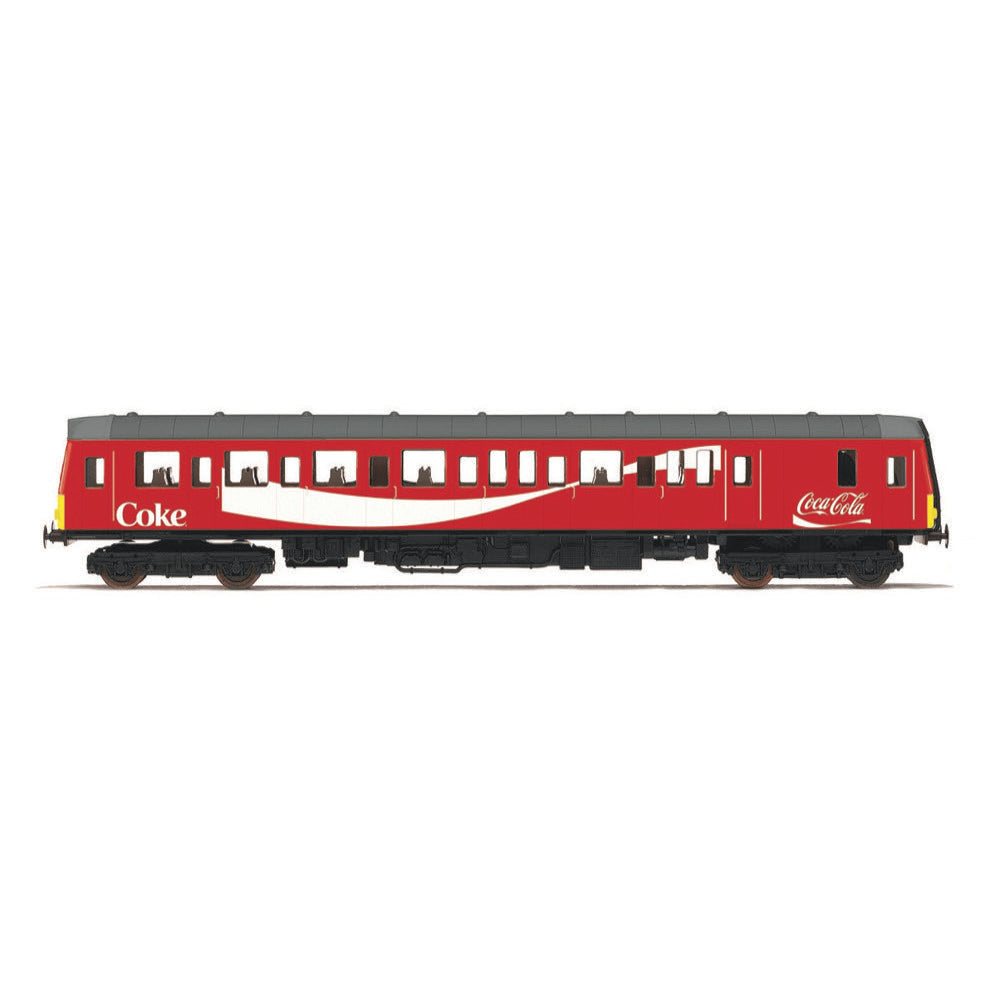
Hornby R30203 OO Coca-Cola Class 121
The British Rail Class 121 is a single-car double-ended diesel multiple unit. 16 driving motor vehicles were built from 1960, numbered 55020–55035. These were supplemented by ten single-ended trailer vehicles, numbered 56280–56289 (later renumbered 54280–54289). They have a top speed of 70 mph, with slam-doors, and vacuum brakes. The driving motor vehicles were nicknamed "Bubble Cars" by some enthusiasts (a nickname endorsed and made official by final passenger service operator Chiltern Railways).The Class 121 vehicles were introduced in 1960 for use on the Western Region of British Rail. They were used on various lightly used branch lines in Cornwall including the Looe branch, the branch lines off the main line in the Thames Valley including the Greenford Branch Line, the Bridport branch line (closed 1975), and the Severn Beach line in Bristol. In 1978 all of the units were still allocated to Western Region depots.The Class 121 is Britain's longest serving DMU, operating in passenger service for 57 years until 2017. Since its inception in 1886, Coca Cola has remained one of the most aesthtically distinct brands and popular consumer treats well into the early 21st century. This model pairs two inventions together, an eye catching custom livery for a detailed locomotive.
Specification
- Item Length - Without Packaging (cm): 26.5
- Item Height - Without Packaging (cm): 5
- Item Width - Without Packaging (cm): 3.5
- Item Weight - Without Packaging: 0.35
- Item Scale: 1:76 Scale 00 Gauge
- License: Yes
- License line: SCMGE. Flying Scotsman is a National Railway Museum locomotive.
- Finish: Painted
- Colour: Red
- DCC Status: DCC Ready 8 pin socket
- Operator: Coca-Cola
- Designer: Pressed Steel
- Livery: Coca-Cola Red
- Minimum Curve (mm): Radius 2
- Motor: 5 Pole Skew wound
- Number of Parts: 1
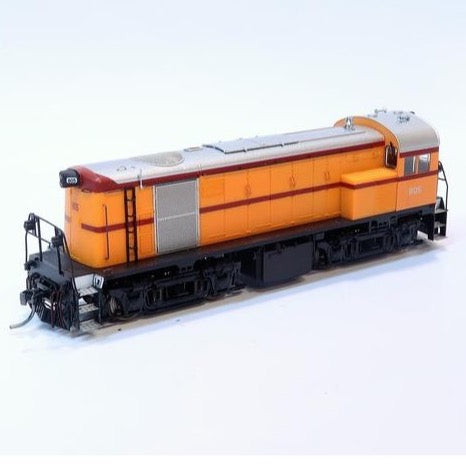
SDS Models HO 806 SAR Traffic Yellow 800 Class Locomotive
SDS Models HO 806 SAR Traffic Yellow 800 Class Locomotive
Entering service from the mid 1956 onwards these 10 English Electric 750 HP shunting locomotives were numbered from 800 to 809. They were predominantly found working around Port Adelaide and in particular Gilman Yard. Later and from time to time they could also be found working Passenger trains around the suburbs. They remained in service until the late 80s and some units through until 1991, all except 801 were scrapped. When AN commenced operations the class leader 800 was renumbered to 810.
Features
- Highly detailed Ready-to-Run HO gauge model
- Precisely tooled plastic body (ABS)
- Genuine Kadee scale head whisker coupler
- Separately applied handrails and detail parts
- 5-Pole skew wound electric motor and dual flywheels
- All wheel drive and electrical pickup
- LED head and marker lights, body mounted
- All models come standard with an MTC 21 pin motherboard
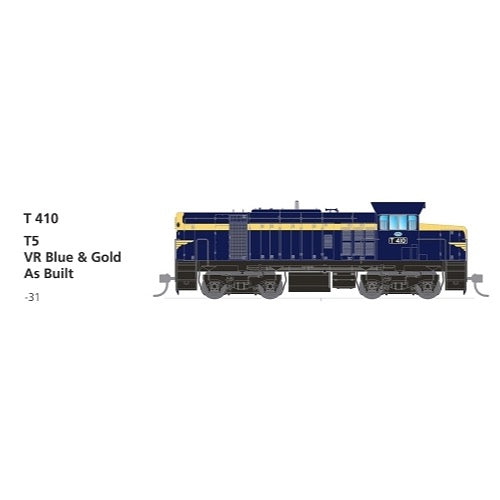
SDS Models HO T410 VR Blue & Gold T5 Series T Class Locomotive DCC Sound
The Victorian Railways received their second series of T class locomotives from late 1959, these were mechanically similar to the first series but featured a new raised height operating cab layout. This new style of raised cab design featured throughout the remainder of the T class series.
SDS Models are pleased to offer the inclusion of the T-2 series within our range of Victorian Railways T class models.
Based upon the tried and proven Austrains T class mechanism we have comprehensively retooled almost every item, bringing the model inline with our exacting scale and design standards. Some 220 new or re-made parts are involved in the production of the four series we are offering below. All the models now feature prototypically correct width long hoods, series specific and appropriate fuel tank and battery box combinations, improved appearance bogie side frames and brake shoe / wheel tread alignment and a host of other design detail enhancements.
Features
- Highly detailed Ready-to-Run HO gauge model
- Precisely tooled plastic body (ABS)
- Genuine Kadee scale head whisker coupler
- Separately applied handrails and detail parts
- 5-Pole skew wound electric motor and dual flywheels
- All wheel drive and electrical pickup
- LED head and marker lights
- All models come standard with an MTC 21 pin motherboard
- Exclusive and locally recorded EMD sounds by DCCSound
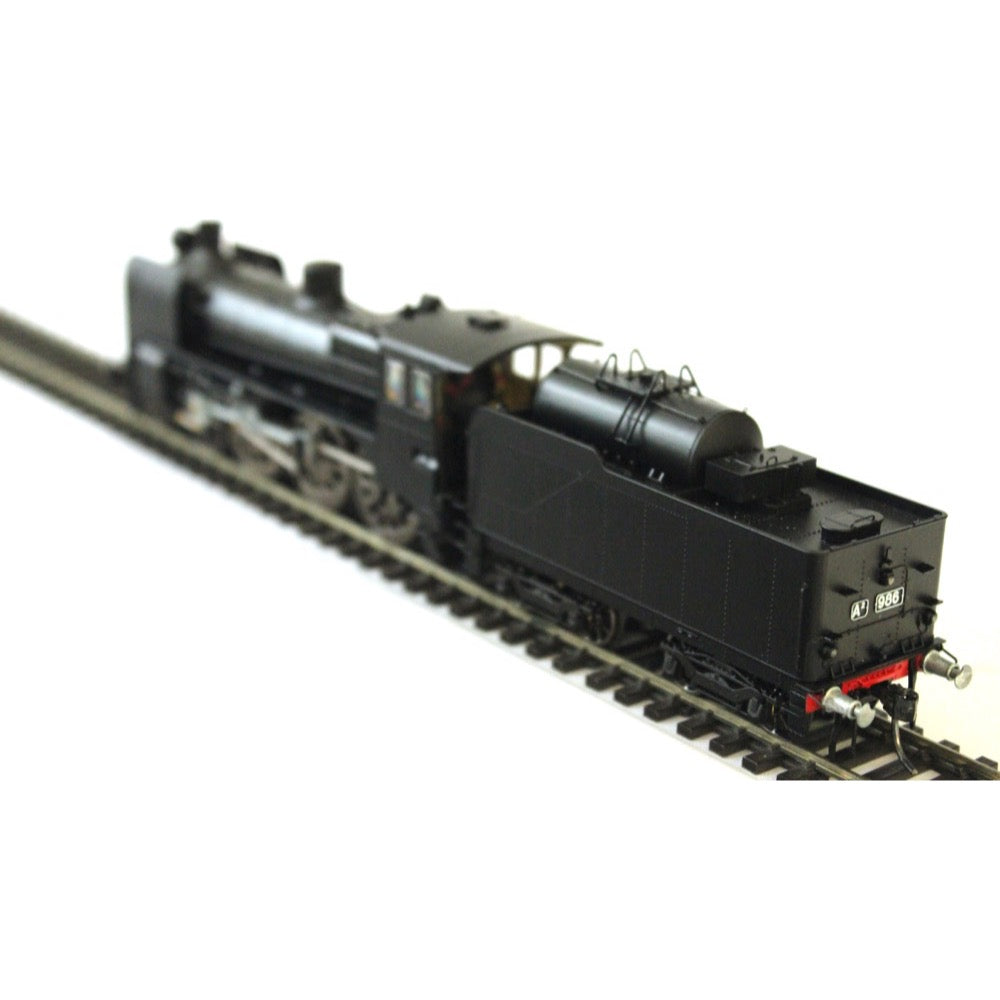
Ixion Models HO A944 VR A2 Class 4-6-0 Steam Locomotive Boxpok Coal Tender Bar Cowcatcher
Ixion Models HO A944 VR A2 Class 4-6-0 Steam Locomotive Boxpok Coal Tender Bar Cowcatcher
Please note that some corrections may have been made to these samples, and the raw zinc alloy parts in the photos (wheels, buffers, motion) are black nickel-plated on the production models.
Features
- Smooth-running, powerful motor with flywheel and 40:1 gearbox
- Exceptional level of detail with crisp pad-printed loco numbers
- New push-to-click loco-tender coupling
- Directional lighting
- Speaker installed in tender of all models
- Zimo MS581N18 Next18-plug sound decoder with authentic A2 sound file in all DCC sound versions
- Genuine Kadee #148 scale couplers
- Sprung buffers
- Smokebox painted matt black, satin black applied to rest of loco
- Walschaerts valve gear
- Loco and tender joined in the box
- And, in a World’s First, a full-colour 3D-scanned and colour 3D-printed loco crew is included with each loco in the accessories pack, produced exclusively for Ixion by West Edge 3D.
Specifications
- Driving wheels: Boxpok
- Tender: Coal


